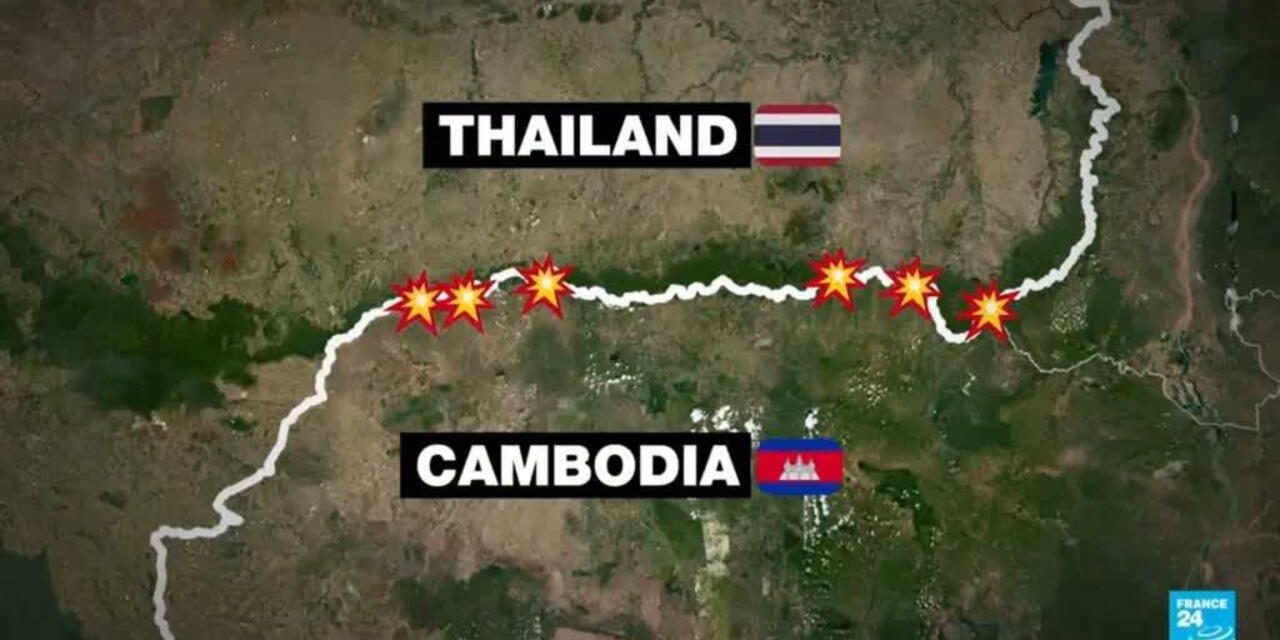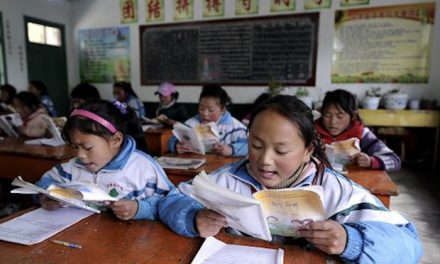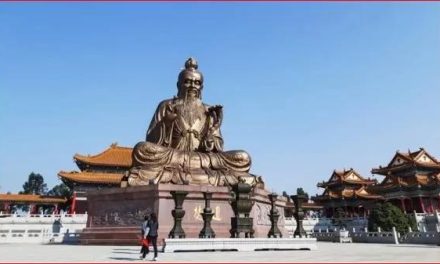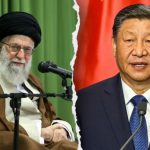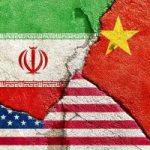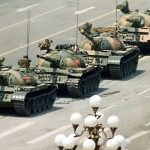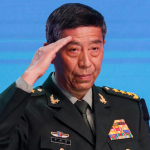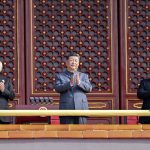By Jianli Yang
In July 2025, a fierce border conflict erupted between Thailand and Cambodia, heightening regional tensions and drawing widespread international attention. On the surface, this appears to be another flare-up of a long-standing territorial dispute between two Southeast Asian neighbors. But beneath it lies a more intricate regional political dynamic—particularly the ongoing strategic rivalry and influence between China and the United States in Southeast Asia. Analyzing the root causes of the conflict, reviewing the diplomatic background of both powers in the region, and examining their respective gains, losses, and strategic calculations is essential to understanding how this incident may shape future geopolitical alignments—and what kind of pragmatic approach the United States should take in response.
I. Roots of the Conflict: Historical Grievances and Contemporary Politics Intertwined
The border dispute between Thailand and Cambodia is deeply rooted, with the central flashpoint being the area surrounding the Preah Vihear Temple. Although the International Court of Justice (ICJ) ruled in 1962 that the temple belonged to Cambodia, the demarcation of surrounding territory and practical control of the region have remained contested for decades. An intense military confrontation broke out in 2008, and although it later deescalated, the underlying issues were never fully resolved.
The latest outbreak in 2025 was triggered by both countries simultaneously increasing military deployments and erecting posts along the disputed border. Rising nationalism and inflammatory rhetoric on social media further fueled the escalation. For the first time, Cambodia’s military employed Chinese-supplied drone reconnaissance and artillery systems, prompting Thailand to retaliate with U.S.-made F-16 fighter jets. These actions marked a new level of military engagement.
The conflict reflects not only unresolved historical grievances but also domestic political pressures—leaders in both countries may have sought to divert attention from internal issues by invoking external threats. The involvement of major powers—particularly the strategic stances and actions of China and the United States backing their respective regional partners—has clearly shaped the background of this confrontation.
II. China and Cambodia: Strategic Depth and Enhanced Confidence
In recent years, China and Cambodia have grown significantly closer, forming what many describe as a de facto alliance. China is Cambodia’s largest source of foreign aid and trade, investing heavily in infrastructure, agriculture, and energy. Militarily, since 2016, China has provided Cambodia with a steady stream of military equipment, including light armored vehicles, rocket launchers, and communications systems.
The most high-profile project is the modernization of the Ream Naval Base. Though Cambodia denies that the facility will host the Chinese navy, reports suggest that China has provided technical and equipment support. This project has significantly bolstered Cambodia’s confidence in navigating regional tensions.
China’s growing influence also extends to Cambodia’s media, bureaucracy, education, and diplomacy, fostering a political environment in which Cambodian elites increasingly view Beijing as their most reliable strategic partner. This deepening “diplomatic dependency” emboldens the Cambodian government to take firmer positions in its disputes with Thailand, underpinned by the belief that China will offer consistent backing.
III. The U.S.–Thailand Alliance: Longstanding Ties, New Constraints
Thailand has long been one of America’s key allies in the Indo-Pacific region. Since the Cold War, the two countries have maintained a defense cooperation agreement, with U.S. forces regularly operating out of Thailand’s U-Tapao Royal Thai Navy Airfield and conducting the annual Cobra Gold joint military exercises.
Despite these long-standing ties, recent years have seen strains. Thailand’s growing closeness with China—especially during periods of military rule—has prompted Washington to adopt a more cautious stance. Tensions between U.S. expectations of democratic governance and Thailand’s internal political structure have also complicated deeper engagement.
Leading up to the 2025 conflict, the U.S. remained publicly low-key about Thai troop movements along the border. However, it is reported that Thailand’s use of F-16s and C4ISR systems involved U.S.-supported platforms. While the U.S. did not explicitly encourage military action, Thailand’s confidence clearly drew from its long-standing defense cooperation with Washington.
IV. Strategic Gains and Losses for China and the United States
(a) China: Gains and Risks
Gains:
The conflict underscored Cambodia’s deep reliance on China—militarily, diplomatically, and economically—illustrating the success of China’s peripheral strategy based on security and aid. Cambodia’s public calls for peace also allowed China to portray itself as a responsible power seeking stability in the region.
Risks:
China’s response in the early stages of the conflict was ambiguous. It neither restrained Cambodia nor actively mediated, raising questions about its neutrality. This may damage China’s credibility with Thailand and within ASEAN as a whole. Furthermore, an escalation could disrupt China’s broader regional development strategy centered on stability.
(b) United States: Limited Returns
Strategic value gained was modest. While the U.S. maintained its military framework with Thailand and demonstrated regional deterrence capabilities, it holds almost no sway in Cambodia. U.S. responses after the conflict were seen as weak—former President Trump proposed to mediate, but the gesture was widely regarded as symbolic.
Diplomatic costs include mounting skepticism within ASEAN. Several Southeast Asian nations believe the U.S. views the region primarily through the lens of great-power competition, rather than a shared commitment to peace and stability. The conflict also exposed gaps in the U.S. toolkit when responding to crises involving non-allied actors.
V. Broader Geopolitical Impacts: Stability Meets Competition
Although the Thailand–Cambodia conflict did not escalate into full-scale war, it sent shockwaves through Southeast Asia. On one side, China showcased its ability to build influence through a mix of strong aid and soft diplomacy, enhancing its appeal to neighboring states. On the other, the U.S. appeared reactive and constrained, with its traditional alliance network lacking effective mobilization.
In the near term, China is likely to consolidate a “near-periphery concentric circle” involving Cambodia, Laos, and Myanmar. Meanwhile, the U.S. will seek to deepen ties with Vietnam, Indonesia, and the Philippines to counterbalance China. The competition is no longer limited to the military domain—it now encompasses economic models, technological cooperation, and cultural engagement.
Importantly, both China and the U.S. have exercised restraint throughout the conflict. Neither side allowed the crisis to spiral into a direct confrontation, signaling that both recognize the value of maintaining regional stability in Southeast Asia.
VI. What the U.S. Should Do: Restraint, Reengagement, and Regional Integration
For the United States, this conflict is a clear signal: Southeast Asia is no longer merely a battleground for great-power rivalry—it is a complex, multi-polar system requiring nuanced strategy. Washington must recalibrate its approach to restore credibility and sustain influence in the region:
- Strengthen multilateral mechanisms: Support ASEAN mediation, regional maritime security initiatives, and humanitarian or disaster-relief cooperation to enhance perceptions of the U.S. as a provider of public goods.
- Reengage with Cambodia: Avoid binary framing and hostile rhetoric. Instead, promote cultural, educational, and green development programs to gradually regain influence and weaken Cambodia’s overdependence on China.
- Reframe strategic messaging: Stop portraying Southeast Asia as a pawn in the U.S.–China contest. Instead, emphasize shared prosperity, mutual respect, and inclusive development to win over neutral actors.
- Embed in regional institutions: Deepen integration through APEC, the Indo-Pacific Economic Framework (IPEF), and other platforms, ensuring that U.S. influence becomes systemic rather than externally imposed.
Conclusion
The Thailand–Cambodia conflict serves as a warning to the region and a case study of the complexities of major-power competition. China has demonstrated the effectiveness of long-term strategic engagement but faces reputational and coordination risks. The U.S., meanwhile, has revealed limitations in managing influence over non-allied states. Moving forward, if both powers can establish rules for non-confrontational competition in the region, it may provide the foundation for enduring peace and stability in Southeast Asia.

